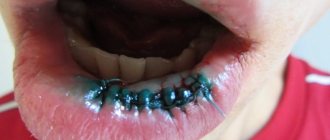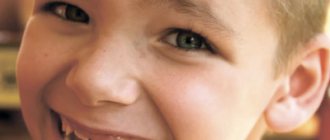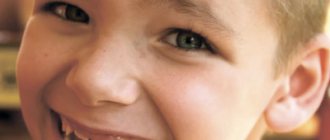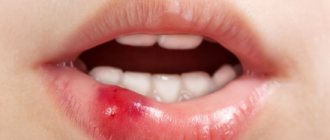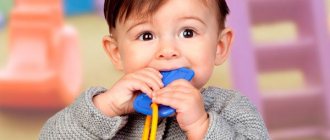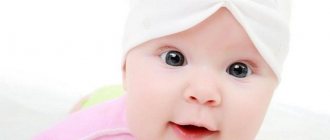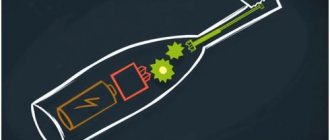One can only envy the activity and curiosity of young children. While learning about the world around them, children often injure their knees, palms, and fingers. But most often the face suffers: a child, falling to the ground, due to insufficiently developed coordination, does not always have time to put his hands in front of him, which should hold his body at that moment. So it turns out that as a result of a fall, even the most harmless one, the baby’s nose, forehead or lip suffers. As a rule, these injuries are not terrible, but you need to be able to treat them and reduce pain. Therefore, let's try to understand the question, if a child breaks his lip from the inside and it is swollen - what to do in such cases?
First aid for parents
The lip is a very delicate part of the human body. Under the thin skin of the lips there are a huge number of small capillaries, which even with the slightest injury bleed heavily. A child can break his lip anywhere: he can trip and fall, hit a door frame while running enthusiastically, fight with a peer over a toy, etc. Of course, your own child’s broken lip is not a sight for the faint of heart. But a parent must be able to cope with their emotions, remaining calm and confident. But what should be done if a child has such an injury?
- If a child breaks his lip on the street, the wound should be blotted with a clean bactericidal wipe or a regular handkerchief. Before treating a wound, be sure to wash your and your child’s hands and treat them with an antiseptic to reduce the risk of infection of the wound.
- At home, the wound on the lip should be washed with slightly warm water. If there are grains of sand or particles of earth on the wound, it is important to carefully remove them with a stream of warm water.
- Treat the wound with hydrogen peroxide, even if it is located inside the lip. To do this, soak a cotton swab in a disinfectant and apply it to the damage for a few seconds.
- You can disinfect the oral cavity if the child rinses it with a solution of the drug Miramistin or chamomile infusion. If the baby does not yet know how to do this, apply a cotton pad soaked in one of these products to the wound.
- Instead of antiseptic drugs, you can use natural honey - it copes well with germs and heals small wounds. However, it is better to lubricate the child’s lip with sweet medicine at night so that the baby does not feast on it.
- If you have successfully stopped the bleeding, inspect the injury both inside and out: the lip may look swollen. If so, apply a cold compress to it.
- It is not recommended to use brilliant green and iodine to treat a wound on the lip, since these products can damage the delicate skin of the organ, and iodine will contribute to the resumption of bleeding.
- If your lip is severely broken and you find a fairly deep wound, it is better to rush to the trauma department or call a doctor at home. Your baby may need stitches.
If a child manages to break his lip, do not scold him for his carelessness and clumsiness. Show how much you love your baby, be confident in your actions, don’t panic. Feeling parental support, the baby will quickly calm down, and only a slightly swollen area on the lip will remind of the past injury. And remember: if a child’s temperature rises due to an injury, the frenulum, teeth or gums are severely injured, and the wound is deep or completely through, do not hesitate to visit a doctor - doing it on your own in this case can lead to irreversible consequences.
What to do if a child swallows a coin?
What to do if a child gets his finger caught in a door?
What to do if a child has been bitten by a wasp: first aid
What are the causes of such cracking:
- Weather + improper care
Cold and wind or hot sun contribute to dry lips, and if you do not take care of your lips in time and lick your lips, the skin becomes thin and cracks. It becomes difficult to heal cracks, since during talking, smiling and eating, the skin cracks again and again.
- Lack of vitamins A, B and E.
The skin loses strength, elasticity and moisture. Lips dry out and burst.
- Nasal breathing disorder
If a child breathes through his mouth, his lips instantly become chapped, especially in winter, and crack. If your baby does not have a runny nose, but still breathes through his mouth, contact an ENT specialist. Perhaps the problem is in the nasal septum or adenoids.
- Dehydration
Due to intense physical activity and accelerated metabolism, the child’s body spends a lot of fluid. Its absence primarily affects the condition of the lips - the only area of the skin that does not produce sebum.
- Stress, fatigue and increased physical activity
- Side effects of medications (diuretics, hormonal therapy)
- If a child eats and drinks something outside in winter
- Diseases of the gastrointestinal tract
Caring for a split lip in the following days
Naturally, a one-time treatment of a lip injury is not enough for it to heal without consequences. You need to take care of the wound until it heals completely. How to do this correctly?
- Apply calendula ointment, Bepanten or zinc ointment to your lip 3-5 times a day.
- Make sure that the child does not tear off the crust that has formed on the wound with his teeth or hands.
- Treat your baby's lip inside and outside with furatsilin solution by moistening a cotton pad or swab with it. To disinfect an injury, treat it with Miramistin.
- Before going outside, lubricate your child's lips with an emollient, such as chapstick or propolis-based ointment.
- If the wound is located from the inside, you need the baby to rinse the mouth with chamomile infusion 4-6 times a day. Small children need to make lotions from the same infusion.
If your lip is severely broken and requires stitches, your surgeon will tell you about further care for the injury. It is imperative to follow his recommendations to reduce the risk of wound infection.
Experts' opinion
As a result of clinical studies conducted, it was confirmed that La Cree lip balm:
- relieves discomfort and dry skin;
- restores dry and chapped lips;
- moisturizes and protects the delicate skin of the lips from cold and wind.
The conducted clinical study proves the high efficiency, safety and tolerability of products for daily skin care of children with mild and moderate forms of atopic dermatitis and during remission, accompanied by a decrease in the quality of life of patients. As a result of therapy, a decrease in the activity of the inflammatory process, a decrease in dryness, itching and flaking was noted.
Sources:
- Fokina R.A., Atopic dermatitis: stages of development of classification forms, Siberian Medical Journal, 2007
- A.N. Pampura, A.A. Chuslyaeva, Modern approaches to the treatment of atopic dermatitis in children
- Yukhtina N.V., Modern ideas about atopic dermatitis in children
Photos of diathesis
Photo album on the disease
How to protect your child from lip injury?
Even an adult can break their lip, let alone children. But you can still reduce the risk of injury. For this:
- Explain to your child the rules of behavior while walking, on the playground, near swings, horizontal bars and carousels;
- Buy comfortable shoes for your baby with stable, non-slip soles and fastening fasteners;
- remove from children's clothing all parts that can get caught on surrounding objects and cause injury to the child;
- always put on protective equipment for your child (helmet, knee pads, elbow pads) if he is skating, cycling, skateboarding or scootering;
- always look after your child;
- do not leave the baby alone at home if the windows are open;
- always put sharp objects out of reach of the baby;
- In a car, transport your child only in a child seat;
- Fill your first aid kit with all the necessary first aid supplies for injuries.
A child can fall and break his lip at any age and even with the most vigilant supervision of parents - alas, no one is immune from this. Therefore, it is worth preparing for possible emergency situations, and if this happens, meet it fully armed. Remember that your composure, confidence in actions and care will quickly return the baby to its previous activity.
Comments ()
The use of folk remedies
You can supplement home treatment for a cut lip in a child with effective folk remedies that will destroy pathogenic microorganisms in the damaged area and accelerate tissue regeneration. If a child has a broken lip from the inside or outside, then the injury can be treated with safe and effective folk remedies:
- First of all, after cutting your lip, wash it with chamomile decoction. For this purpose, you can use an infusion of other medicinal herbs (sage, oak bark, etc.). If the wound is on the inner surface, then apply a cotton swab dipped in liquid to it.
- The wounded area can be smeared with honey , but provided that the child is not allergic to it. Honey has antiseptic properties and will speed up healing. You can also use propolis; to do this, you need to thoroughly grind it and melt it in a water bath. Then the liquid is mixed with honey and the wound surface is treated. It is best to lubricate your lip before going to bed; overnight the product will have time to be completely absorbed into the skin.
- speed up tissue regeneration . However, this remedy can be used if the wound is not very deep.
These medications can be used to complement drug treatment.
However, consult your doctor before using them. Before a walk, lips should be lubricated with hygienic lipstick or emollient cream. This is necessary so that the healing wound does not cause discomfort.
The child hit his head
They are open and closed. With open wounds, the soft tissue and bones of the skull are damaged, which can lead to inflammation in the membranes and substance of the brain. In this situation, it is necessary to immediately call an ambulance and hospitalize the child. With closed injuries, soft tissues and bones remain intact (minor abrasions and scratches do not count), but swelling appears. You can relieve swelling by applying an ice pack or a towel soaked in cold water to the injury site for 5-10 minutes.
Alarming symptoms of a head injury that should alert parents are drowsiness, lack of appetite, nausea, and headache. As a rule, these are signs of neurological problems that have arisen, indicating a concussion or hemorrhage. Therefore, even with a minor injury, it is advisable to show the baby to a specialist within 24–48 hours after the fall and undergo a full examination, including ultrasound, MRI (magnetic resonance imaging), CT (computed tomography), which will allow us to determine the extent of the damage and develop adequate treatment tactics.
How does this happen
Every year, 830 thousand children die due to accidental injury worldwide. Half of the cases in our country, according to Rosstat, are domestic injuries, 34% are street injuries. In boys, injuries occur more often and the consequences are more serious. This is usually associated with higher levels of activity and social approval, and parents are less likely to restrict their exploratory activities. Most children's injuries are superficial, about 15% are dislocations and fractures of the arms and a very small part are fractures of the legs and head.
In the first place for reasons is parental neglect. When it seems that nothing will happen to the child or adults have underestimated the danger of the situation. This is confirmed by our experts.
“Children’s injuries and their prevention are a serious problem,” says pediatric orthopedic traumatologist and surgeon at the Fantasy clinic Ilya Zelenkin, “especially during school holidays, when children have more free time, are more often on the street and are left without adult supervision . Despite the wide variety of injuries in children, the causes that cause them are typical. First of all, this is a poor environment, neglect of adults, careless, incorrect behavior of a child at home, on the street, during games, and sports. The occurrence of injuries is also facilitated by the psychological characteristics of children: curiosity, great mobility, emotionality, lack of life experience, and hence the lack of a sense of danger.”
In infancy, falls from a bed or changing table most often occur; in second place is the “shaken baby” syndrome, when a parent who has lost self-control shakes the child while crying loudly. In both cases, the main danger is damage to the brain and neck.
When a child begins to crawl, he often injures his fingers. To avoid this, you need stoppers in the doors and protection on the drawers. Once a child begins to learn to stand up, head bruises from unsuccessful attempts and minor injuries from meeting the outside world are added.
As soon as a child begins to walk, he can reach dangerous objects, so after a year, children can swallow adult pills, household chemicals, or climb on a cabinet. Burns are also common.
An older child is more likely to collide with other children on the slide or fall off the carousel on the playground. Also, many people get scooters and balance bikes, so the child should immediately be taught to ride with a helmet and knee protection.
At school age, the incidence of injuries decreases, children develop a sense of danger and the necessary knowledge about the world, which allows the child to avoid injury. But at the same time, the child often has faster transport: hoverboards, mopeds and roller skates, which without protection can seriously injure a teenager.
The child tore the frenulum on the upper lip
The mouth has 2 frenulums that connect the upper and lower lips to the oral cavity. If a child falls and breaks this jumper, then he needs help:
- The mouth is washed with cooled boiled water,
- Then the affected area is treated with hydrogen peroxide,
- After this, the wound is treated with antiseptics: Furacilin solution, Chlorophyllipt oil, Miramistin spray,
- A cold compress is applied to the affected area to help relieve pain and stop bleeding.
After this, you need to urgently show the child to the doctor. This is a serious injury that requires qualified medical care.
Otherwise, the risk of infection increases. If the frenulum does not heal properly, speech defects, facial deformities, and problems with chewing may appear. To avoid complications, you need to put self-absorbing sutures on it.
The operation is performed under local anesthesia for 30 minutes. After it, swelling appears, which with proper care will disappear after 2 days. Tissue regeneration in this area usually occurs quite quickly. You need to take care of sutures after surgery using antimicrobial agents. In addition, it is necessary to rinse your mouth with antiseptic solutions after each meal.
When to see a doctor
As mentioned, if the wound is shallow, then it can be treated at home. But at the same time, parents should carefully monitor the child’s condition in order to seek medical help if necessary.
You should immediately visit a doctor after a cut lip in the following cases:
- The wound is too deep or the inner surface of the lip is damaged,
- Not only the lip is damaged, but also the gum, tooth or frenulum. In such cases, you need to contact a dentist who will assess the consequences of the injury and prescribe the necessary treatment,
- The body temperature increased to 37.5°C or more within 2 days after the lip cut. Heat indicates infection of the damaged area,
- Blood continues to flow from the wound for half an hour,
- There is a suspicion that there is a foreign body in the wound,
- The damaged lip is numb,
- The swelling and redness does not go away for a long time.
If such symptoms appear, immediately go to the doctor, as your child’s health is at risk!
The child knocked out a tooth
In rare cases, with strong impacts, the baby may lose a tooth. When the milk is knocked out, you need to rinse the child’s mouth with water, apply a cold compress and contact the pediatric dentist.
In the same case, when a permanent tooth has fallen out, you should carefully grab it by the crown (the upper part of the tooth that is visible in the mouth), trying not to touch the root, so as not to damage the connective tissue necessary for the tooth to heal. Then carefully wash with cool water without soap or detergents, pack in a clean container filled with milk, salted water or saliva, and rush to the dental clinic for reimplantation. Remember: the tooth quickly dehydrates, so you can’t hesitate. The faster you see a specialist, the higher the prognosis for the “survival” of teeth. Even if the reimplanted tooth subsequently begins to turn black, the operation is useful because it helps to avoid atrophy of the jaw bone tissue, which will make it possible to place an implant in adulthood.
